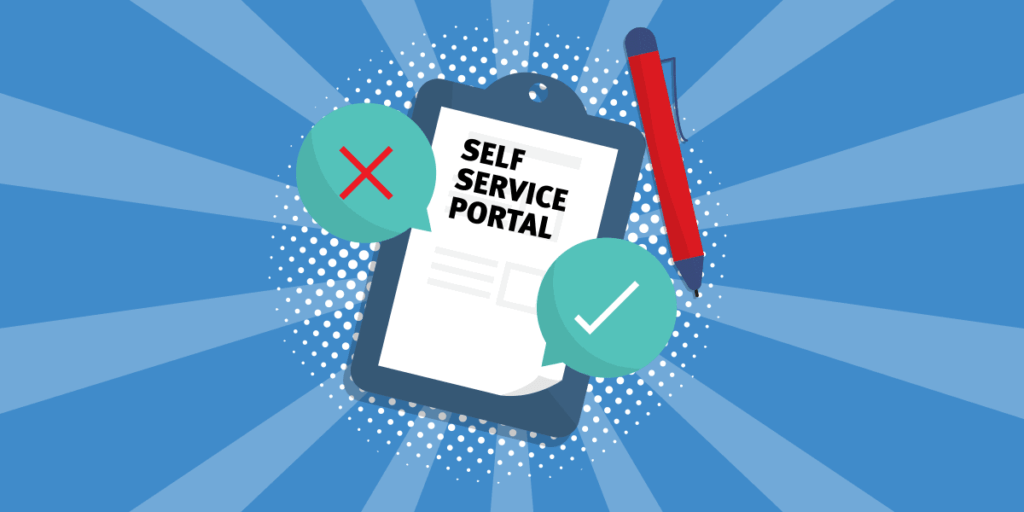In today’s technology-dependent world, businesses must keep their IT infrastructure running smoothly. However, resolving IT tickets can be time-consuming and costly and can significantly impact end-user productivity. This article will discuss how businesses can reduce IT tickets without impacting end-user productivity. We’ll explore how IT departments can leverage technology, enhance processes, and optimize resources in order to maximize efficiency and minimize IT tickets.
In recent years, the number of IT tickets has grown exponentially as organizations look to streamline their operations and increase efficiency. While it is crucial to reduce IT tickets, it is equally essential to ensure that the end-user experience is left unaffected.
Related article: What is Change Management?
The importance of reducing IT tickets
Reducing IT tickets is an integral part of effective IT management. By reducing IT tickets, organizations can save time, money, and resources in the long run. A reduction in IT tickets will also help improve customer satisfaction, as fewer tickets mean fewer disruptions to their workflows. Additionally, reducing IT tickets will lead to improved system performance, as fewer tickets will result in fewer issues that need to be fixed. Finally, reducing IT tickets will help reduce the amount of time IT staff spend troubleshooting and resolving issues, allowing them to focus on more critical tasks.
Strategies to reduce IT tickets
There are a number of strategies that organizations can use to reduce IT tickets without impacting end-user productivity.
Automate IT processes
Automating IT processes can help reduce the amount of manual work required, which in turn can reduce IT tickets. Automation tools, such as robotic process automation (RPA) and software-defined automation (SDA), can be used to automate processes such as software deployment, patching, and reporting. This can reduce the amount of time spent on manual tasks and help reduce IT tickets.
Streamline user onboarding
A streamlined user onboarding process can help reduce the number of IT tickets related to user access, configuration, and software installation. Automating access provisioning, creating templates for user accounts, and setting up automated processes to remind users to update their passwords can help reduce the manual work needed to get users up and running.
Leverage data analytics
Analyzing IT tickets can help identify trends and root causes of issues. This can then be used to improve processes, create better documentation, and create automated workflows to prevent future IT tickets. Data analytics can offer more significant insights into the user experience, identify issues before they become problems, and quickly address any underlying issues that may be causing the tickets to be generated. Analytics also provides insight into user behavior and usage patterns, with user engagement metrics showing the areas where users are struggling.
Improve user training
Improving user training can help reduce the number of IT tickets related to user errors. Providing users with better documentation, more precise instructions, and better access to online training can help reduce IT tickets and improve user productivity.
Invest in self-service tools
Investing in self-service tools for users can reduce the amount of time spent on manual support tickets. These tools can allow users to troubleshoot basic issues without needing to contact IT support until escalation is necessary.

Implement proactive maintenance
Implementing proactive maintenance can help reduce the number of IT tickets related to system performance issues. Regular system checks, patching, and software updates can help keep systems running smoothly and reduce IT tickets.
Outsource IT support
Outsourcing IT support can help reduce the number of IT tickets. Companies can outsource tasks such as system maintenance, patching, and software installation to experienced third-party providers. This can free up internal IT teams to focus on more strategic tasks and reduce the need for manual support.
These strategies can help organizations reduce IT tickets without impacting end-user productivity. However, there are a few challenges in implementing an efficient process.
Challenges in reducing tickets without affecting productivity
Some of the challenges faced by companies include the following:
Establishing a proactive approach to IT ticket resolution
Implementing a preventive maintenance program to identify and resolve issues before they become a problem can dramatically reduce IT tickets. A proactive approach to IT ticket resolution requires a significant shift in how IT teams approach ticket resolution. This shift requires teams to move away from reactive problem-solving methods, such as responding to tickets only after they are received, to a more proactive approach, where teams are actively monitoring systems, identifying potential issues before they become problems, and rapidly responding to issues that arise.
Keeping IT staff up-to-date on the latest trends and technologies
IT staff must be able to diagnose and resolve issues that users may have quickly. New technologies and trends are constantly emerging, and it is hard for IT staff to keep up with them. It means that when an IT ticket is submitted, the IT staff may not be familiar with the technology or trend and may not know how to best address the issue. Keeping abreast with the latest technologies and trends can help IT staff stay ahead of the curve and be better prepared to quickly and effectively handle tickets.
Investing in automation
Automating manual processes and tasks can help reduce the amount of time spent on IT tickets. Automation will also help ensure that processes are implemented consistently and accurately. However, it will require significant investment.
Creating self-service tools and knowledge base
Allowing users to quickly and efficiently resolve their own issues can help to reduce the amount of time that IT staff spend on IT tickets. Self-service tools should be easy to use and accessible. Establishing an easily accessible knowledge base can help reduce the amount of time spent on IT tickets. A knowledge base should be comprehensive and regularly updated.
Balancing customer expectations
Organizations need to focus on building a solid customer service culture that puts customer satisfaction first. It includes ensuring that IT tickets are handled quickly and efficiently, providing clear communication about the status of tickets, and proactively identifying potential issues before they turn into tickets. In addition, organizations should focus on developing and implementing user-friendly processes and technologies that streamline the way end users interact with IT services and reduce the need for IT tickets.
Over and above these challenges, unexpected roadblocks can arise in this process due to a lack of transparency and collaboration between the IT team and the end user. There may be differences in expectations, communication issues, and misunderstandings which can all lead to unexpected roadblocks. There must be a clear understanding of the end user’s needs and expectations, and the IT team must be familiar with the current IT environment and processes to identify any potential roadblocks and potential solutions.
There are too many benefits to reducing tickets while ensuring high productivity levels and customer satisfaction, so it pays to ensure that the company has not only the right resources but also the right processes and strategies to ensure that the resources are deployed effectively and efficiently.
Benefits of reduced IT tickets
Reducing IT tickets without impacting end-user productivity has the potential to offer numerous benefits to a business, including:

Improved efficiency
Reducing IT tickets means that IT technicians are able to focus their efforts on more critical tasks, such as troubleshooting complex problems or developing new technology. This increased efficiency helps ensure that the IT team can provide better service to its customers.
Cost saving
Reducing IT tickets can result in cost savings for the business, as fewer tickets mean fewer resources allocated to resolving them, leading to a reduction in the overall IT budget and freeing up funds for other areas of the business.
Increased productivity
When IT tickets are reduced, the end-user experience is improved. It can lead to increased productivity, as users are able to spend more time on their tasks instead of dealing with technical issues.
Better user experience
Reducing IT tickets also leads to a better user experience, as users can quickly and easily access the help they need without having to wait for IT support.
These benefits, and more can make a huge difference to end-user productivity and customer satisfaction.
Related article: Service Desk Best Practices You Should Know in 2023
Final note
It is possible to reduce IT tickets while ensuring that end-user productivity remains high, although it requires organization and collaboration from IT departments and end users. IT departments can reduce the number of tickets by providing a clear and concise process for end users to submit tickets and for IT teams to respond to them. Additionally, by leveraging automation and self-service solutions, IT departments can further streamline the ticket submission and resolution process. Therefore, the right strategy, technology, and best practices will help reduce IT ticket volume without affecting end-user experience or productivity.













